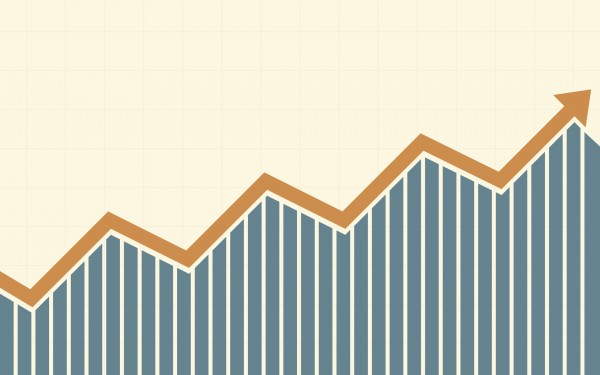Medicare Advantage Members Spent Less Before Switching to MA Plans
Individuals who switched from traditional Medicare to Medicare Advantage plans had lower Medicare spending before they decided to change plans.

Source: Thinkstock
- People who choose to enroll in Medicare Advantage plans have lower average spending before enrolling in these plans than beneficiaries who choose to stay in traditional Medicare, according to a report from the Kaiser Family Foundation.
This suggests that adjusting payments plans based on the spending of those in traditional Medicare may result in overestimated costs for Medicare Advantage beneficiaries, the report stated.
“Medicare payments to Medicare HMOs and PPOs, known as Medicare Advantage plans, have always been based on Medicare spending by similar people in traditional Medicare, partly because Medicare has never had accurate, complete data on the use of services or health care spending for beneficiaries in Medicare Advantage plans,” KFF stated.
“The assumption has been that adjusting payments to plans for health status and other factors accounts for differences between beneficiaries in traditional Medicare and those in Medicare Advantage plans.”
While most stakeholders assume that MA profits are due to managing fees or changing care patterns, and not to favorable selection, selection bias has been an ongoing concern. This would affect the accuracy of Medicare payments to plans on behalf of 20 million Medicare beneficiaries.
READ MORE: CMS Finalizes Medicare Advantage, Part D Payment Policies
KFF researchers set out to determine whether beneficiaries who choose to enroll in Medicare Advantage plans have lower spending on average, before enrolling in Medicare Advantage plans, than those who remain in traditional Medicare.
The team analyzed Medicare Part A and B spending and service use among traditional Medicare beneficiaries in 2015. Researchers then compared average Medicare spending for those who enrolled in Medicare Advantage to those who remained in traditional Medicare in 2016.
Among beneficiaries who enrolled in traditional Medicare in 2015 and switched to Medicare Advantage in 2016, average spending was $1253 (13 percent) lower than those who remained in traditional Medicare.
“The $1253 average difference in spending is nearly four-times larger than the average per capita quality-based bonus payment ($336) paid to Medicare Advantage prescription drugs plans that qualified for bonuses in 2015,” the report said.
“The average difference in spending is also more than twice as large as the average annual premium paid by Medicare Advantage enrollees in 2015, including enrollees in plans with no premium.”
READ MORE: What’s the Role of Medicare Advantage for Payers and Consumers?
When researchers included Part D spending in their analysis, the results showed that traditional Medicare beneficiaries who switched to Medicare Advantage had total spending that was 15 percent lower than spending for beneficiaries who remained in traditional Medicare.
The group also compared differences in Medicare spending across demographics. The results showed differences in spending among beneficiaries in traditional Medicare plans and those who switched Medicare Advantage across all ages and increased with age for beneficiaries older than 65. This indicates that selection bias and associated overpayments may increase with age.
“For example, among beneficiaries ages 65-69, average traditional Medicare spending in 2015 was $1119 lower among beneficiaries who switched to a Medicare Advantage plan in 2016 than for similar beneficiaries who remained in traditional Medicare; among beneficiaries ages 85-89, the difference in spending was $1314.” KFF said.
Additionally, researchers found differences in spending among dually eligible beneficiaries. Medicare beneficiaries with full Medicaid benefits who switched to Medicare Advantage plans spent, on average, $1142 less than similar dually eligible beneficiaries who stayed in traditional Medicare.
Partially dually eligible individuals who switched to Medicare Advantage plans had traditional Medicare spending that was $1162 less than spending for those who remained in traditional Medicare.
READ MORE: Humana, Aledade Bring Value-Based Care to Medicare Advantage Members
“In other words, among dually eligible beneficiaries – a group of beneficiaries with relatively high Medicare spending – those who used more services and incurred higher Medicare spending in 2015 were more likely to remain in traditional Medicare in 2016, while dual eligibles with lower service use and spending were more likely to enroll in a Medicare Advantage plan in 2016,” the report said.
Researchers examined differences in Medicare spending among beneficiaries with chronic conditions as well. Even among those with the same chronic condition, those who enrolled in Medicare Advantage plans in 2016 had consistently lower Medicare spending than similar beneficiaries who remained in traditional Medicare plans.
Beneficiaries with diabetes who switched to Medicare Advantage plans in 2016 had Medicare spending that was $1072 lower in 2015, on average, than similar beneficiaries who stayed in traditional Medicare plans.
Among beneficiaries with asthma, Medicare spending was $1410 lower in 2015 for those who switched to Medicare Advantage, compared to similar beneficiaries with asthma who remained in traditional Medicare plans.
“The results suggest that favorable self-selection into Medicare Advantage plans is occurring, even among traditional Medicare beneficiaries with similar health conditions,” the report stated.
“The findings raise questions as to why beneficiaries who are higher utilizers are less likely to go into Medicare Advantage and instead remain in traditional Medicare.”
The team noted that these differences in spending could result in billions of excess Medicare spending over a ten-year period.
“Policymakers could consider adjusting payments to reflect Medicare Advantage enrollees’ prior use of health care services, which could lower total Medicare spending and in turn reduce Medicare Part B premiums and deductibles for all beneficiaries,” the report concluded.
“With more than 20 million enrollees in Medicare Advantage plans and Medicare payments to plans projected to reach $250 billion in 2019, the stakes are high for making payments to plans as accurate as possible.”
